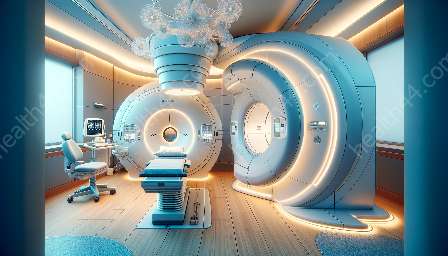Radiation monitoring devices play a crucial role in the field of medical devices and equipment, including radiation therapy devices. These devices are designed to track and measure radiation levels, ensuring the safety of patients, medical staff, and the environment. In this comprehensive guide, we explore the significance of radiation monitoring devices, their compatibility with radiation therapy devices, and their application in the medical industry.
Understanding Radiation Monitoring Devices
Radiation monitoring devices are instruments used to detect, measure, and monitor levels of ionizing radiation. These devices are essential in various settings, including hospitals, research facilities, industrial sites, and nuclear power plants. The primary purpose of radiation monitoring devices is to ensure that radiation levels are within safe limits and to alert personnel in the event of potential overexposure.
Types of Radiation Monitoring Devices
There are several types of radiation monitoring devices, each designed for specific applications. Some common types include:
- Personal Dosimeters: These devices are worn by individuals who work with or are exposed to radiation. Personal dosimeters measure the cumulative amount of radiation to which a person has been exposed.
- Area Monitors: Area monitors are stationary devices placed in specific areas to continuously monitor radiation levels. They are commonly used in nuclear medicine, radiation therapy, and industrial settings.
- Environmental Radiation Monitors: These devices are used to monitor radiation levels in the environment, including air, water, and soil. They are crucial for assessing the impact of radiation on public health and the environment.
- Surface Contamination Monitors: These devices are used to detect radioactive contamination on surfaces. They are particularly important in nuclear power plants and laboratories handling radioactive materials.
Radiation Monitoring Devices in Radiation Therapy
Radiation therapy devices, used in the treatment of cancer and other medical conditions, rely on accurate and reliable radiation monitoring to ensure precise delivery of therapeutic doses. In radiation therapy, some of the key applications of radiation monitoring devices include:
- Treatment Planning: Radiation monitoring devices are used to map the radiation fields and verify the dose distribution within the target area, ensuring that the treatment plan is tailored to the individual patient's needs.
- Patient Monitoring: During treatment, radiation monitoring devices are employed to track the radiation doses delivered to the patient, allowing for real-time adjustments to ensure optimal treatment outcomes while minimizing potential side effects.
- Quality Assurance: Radiation monitoring devices play a critical role in ensuring the consistent and accurate delivery of radiation during treatment sessions. They are used to verify the performance and calibration of radiation therapy equipment.
- MRI Machines: In facilities where both radiation therapy and magnetic resonance imaging (MRI) are performed, radiation monitoring devices help maintain safety and radiation exposure control for patients undergoing MRI examinations following radiation therapy.
- Diagnostic X-ray Machines: Radiation monitoring devices also play a role in ensuring the safe and effective use of diagnostic X-ray machines, helping to measure radiation exposure levels for patients and healthcare professionals.
- Personal Protective Equipment (PPE): Radiation monitoring devices are utilized in conjunction with PPE to ensure that healthcare personnel are adequately protected from radiation exposure during medical procedures and treatments.
Integration with Medical Devices and Equipment
As part of the broader landscape of medical devices and equipment, radiation monitoring devices are integrated into various systems to uphold safety standards and regulatory requirements. They are often interconnected with other medical devices, such as:
Advancements in Radiation Monitoring Technology
The field of radiation monitoring devices continues to evolve, with advancements in technology enhancing their precision, sensitivity, and reliability. New developments include wearable dosimeters that can seamlessly integrate into healthcare professionals' garments, wireless transmission of radiation data for real-time monitoring, and improved algorithms for dose calculations and risk assessments.
Conclusion
Radiation monitoring devices are indispensable tools in radiation therapy and the broader spectrum of medical devices and equipment. Their role in ensuring the safety of patients, healthcare staff, and the environment cannot be overstated. Through ongoing technological advancements and integration with various medical systems, radiation monitoring devices continue to contribute to the advancement and quality of patient care.


